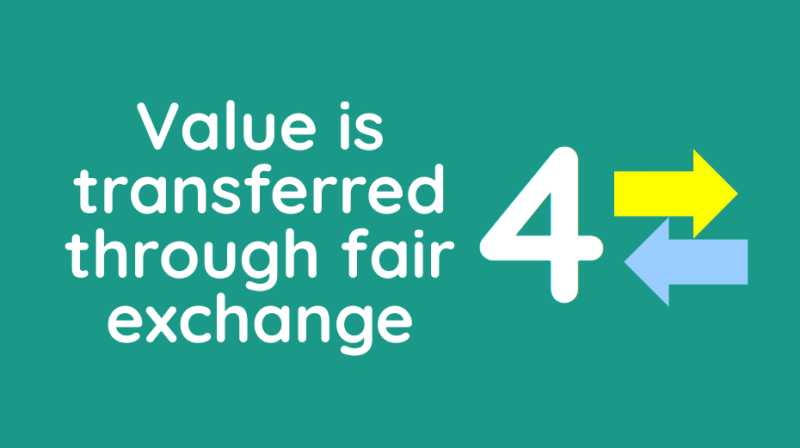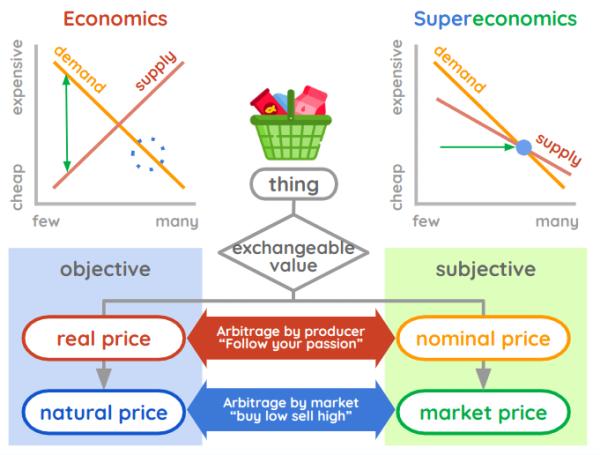The Fourth Law of Value
In order to address all the demand in society, supply has to be exchanged through a medium.
This creates the Fourth Law of Value which states that value is transferred through fair exchange whether it be through money, barter, points, promises, etc.
This mirrors the Second Law of Thermodynamics which relates to heat transfer and entropy.

*In Bio Superphysics, this manifests as the transference of properties to the body of whatever is affecting health. In Supersociology, this is the feelings of members of society affecting other members.
Exchange exists in both Economics and Supereconomics. The latter, however, allows more mediums of exchange as fiat, barter, and points.
Market Price
In our cake example, Mr. Chef baked a cake at $2 real price and exchanged it into $4 by selling it.
The $4 is called the market price which is the actual price that the item is exchanged. Unlike the nominal price that might vary from customer to customer, the market price is applied to all customers.

Smith’s Innovation on Market Prices: Moneyless
Both Economics and Supereconomics observe market prices. But what new thing can Supereconomics offer?
Economics was created from Mercantilism which is based on money.
In contrast, Supereconomics is based on real value of whatever is important to the person, whether it be money, reputation, land, iPhones, family, etc. As such, it allows alternatives to money such as direct barter or indirect barter via points which are based on grains.
- Direct Barter is anything for anything now
- Indirect Barter is anything for anything eventually
Thus, the Fourth law leads to:
- finance and monetary systems
- points-based valuation and points-banking
Economics only has finance. Supereconomics has both finance and barter.
The Fourth Law generates value through primary arbitrage or the difference of your skill and passion level versus the skill and passion of others.
For example, if guitar-playing costs 1 unit of effort to you and 2 units of effort to another person, then you can produce twice his value for the same effort.
The Fourth Law spreads that value through secondary arbtirage or the difference between the market price and the natural price, which will be explained next.
For example, if only a few people in your society wanted guitar songs, and most wanted piano songs instead, then you would rather sell your guitar songs to another society that valued it. You would not try to shift to making piano songs, which is not your core competency.
We can say in a sense that primary arbitrage is wholesale while secondary arbitrage is retail.
The Resulting Concepts from the Fourth Law
The resulting concepts from the Fourth Law of Value are:
- Markets and transaction systems
- Secondary Arbitrage
- Monopoly and competition
- Retail, Imports, Exports
- The Merchant class or cycle